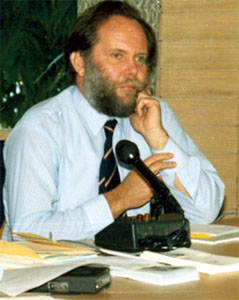The Wildlife Institute of India (WII) is an internationally acclaimed organization, which offers courses on Wildlife Management to the in-service forest officers, academic courses, conducts research on a wide range of issues and provides advisory in wildlife matters to the state and central government. For scientific back up of its research and training, WII has state of the art Laboratories and Herbarium. The Institute’s Herbarium recognized by the 'Index Herbariorum' is listed among the 3567 network of herbaria worldwide cited using the acronym 'WII' in the scientific and botanical publications. It was established in 1986 with a twofold purpose:
-
To create a repository of plant collections representing the flora of different Protected Areas of India, and
-
To develop a basic facility for aiding plant identification, floral inventory and access to plant databases for researchers and students worldwide.
Since its inception, the collection of plant specimens has grown steadily. A significant advancement in this field occurred during the planning of the biogeography-based Protected Area Network in India (1985–1988) under the leadership of Dr. W.A. Rodgers and Sh. H.S. Panwar. This collection was further enhanced by the scientists, research scholars, and students of Wildlife Institute of India. The major plant collectors include Dr. G.S. Rawat who has extensively surveyed and collected plant specimens (more than 50% of the total) from the Western and Eastern Himalaya. Other contributors to the WII Herbarium include Sh. M.M. Babu, Sh. P.L. Saklani, Dr. P.V. Karunakaran, Dr. C.P. Kala, Dr. Sanjay Singh, Dr. Pankaj Kumar, Dr. J.S. Jalal, Dr. Umeshkumar L. Tiwari, Dr. Amit Kotia, Dr. Gajendra Singh, Dr. Ishwari D. Rai, Dr. Amit Kumar and Dr. Navendu Page.
One of unique features of WII herbarium is that it represents flora of a number of protected areas of India. Based on the floristic surveys and inventory of species, the database on the flora of protected areas namely Asola Bhatti Wildlife Sanctuary, Bandhavgarh National Park, Grasslands in and around Pachmarhi Wildlife Sanctuary, Bodhghat submergence area, Madhya Pradesh, Great Himalayan National Park, Pin Valley National Park, Kedarnath Wildlife Sanctuary, Valley of Flowers National Park, Coldarid region of Nanda Devi BR, Rajaji National Park, Eravikulam National Park, Protected areas of Andhra Pradesh, Jaldapara Wildlife Sanctuary, Gorumara National Park, Hemis National Park, Dachigam National Park, Rann of Kutch, Pakhui Wildlife Sanctuary, Arunachal Pradesh etc. has been prepared.

Dr. W.A. Rodgers
(Founder of the WII Herbarium)
